
Having drawn, for the front page of my web site, an image of the flag of Ukraine, due to the current crisis, I thought I would try my hand at drawing the flag of the United States*, my country's neighbor to the south.
I have not attempted to draw flags used during the Revolutionary War, or some other special versions of the flag that cropped up unofficially from time to time, just the regular versions with stars added as additional states were admitted to the Union.
One flag that might belong in this category, an alternate version of the flag with 13 stars, was omitted as some sources show it with six-pointed stars, and others with five-pointed stars pointed towards the flagpole.
Thus, the version of the flag with 13 stars that I show is the "Betsy Ross" flag, as it was also later officially adopted by Congress. While the story of Betsy Ross sewing the flag is apparently generally considered to be mythical, it is believed that it was indeed she who demonstrated that a five-pointed star was not impractical to make.

The Thirteen Colonies which became the thirteen original States, are, of course, Connecticut, Delaware, Georgia, Maryland, Massachusetts, New Hampshire, New Jersey, New York, North Carolina, Pennsylvania, Rhode Island, South Carolina, and Virginia.
The next two states to be added to the United States were Vermont and Kentucky. The flag modified to include those states not only had 15 stars, but also 15 stripes, making it unique.
This flag was adopted in 1795:
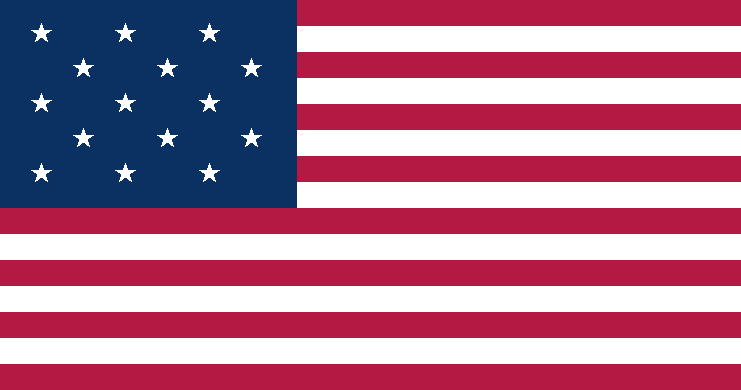
Thereafter, it was decided to only increase the number of stars, while leaving the number of stripes at the original thirteen, as one might expect increasing the number of stripes to eventually lead to an excessive number. As there are 50 states in the U.S.A. at present, this was a prescient decision.
A new design for the flag, with 20 stars, and 13 stripes, was then made to acknowledge the admission to the Union of Tennessee, Ohio, Louisiana, Indiana, and Mississippi.
This flag was adopted in 1818:
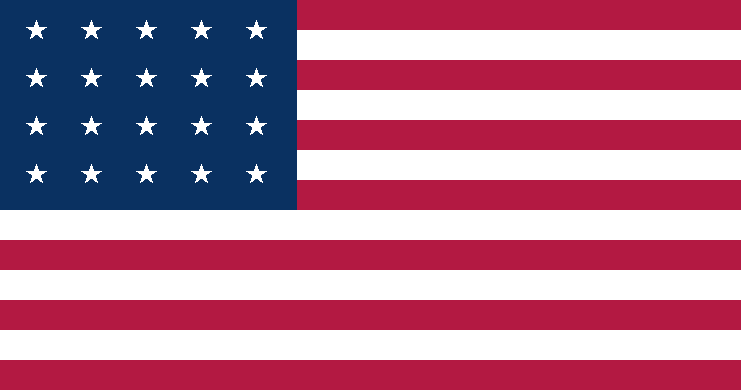
Afterwards, the flag was changed again when Illinois was admitted, instead of waiting for more states.
This flag was adopted in 1819:
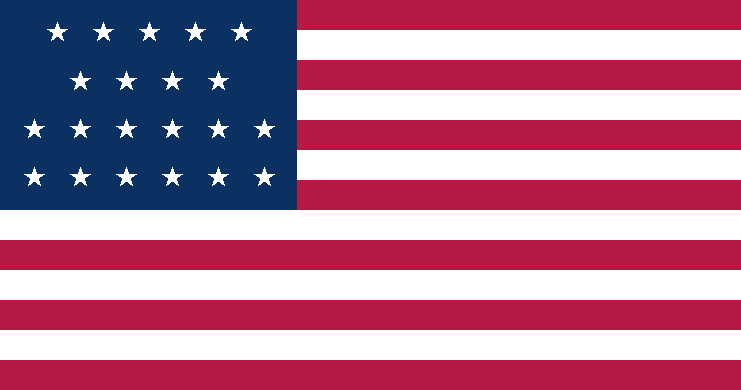
Then a flag with 23 stars was adopted to acknowledge the addition of Alabama and Maine to the Union.
This flag was adopted in 1820:
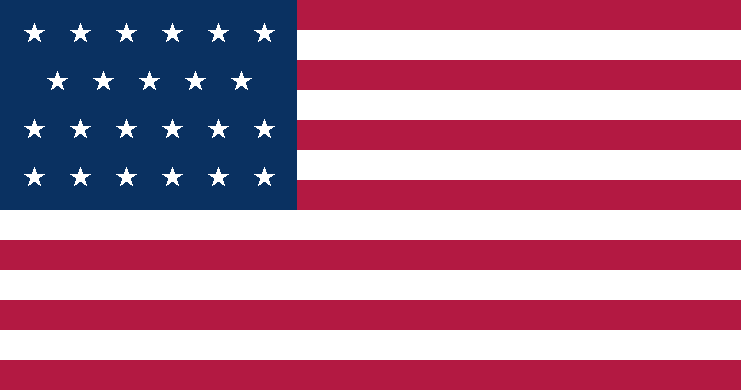
And another star was added for Missouri.
This flag was adopted in 1822:
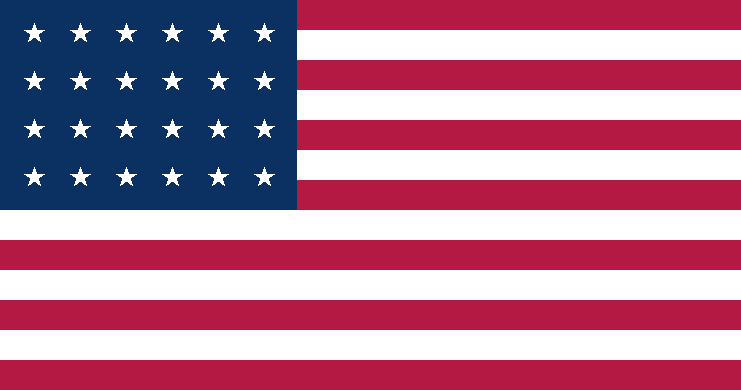
The frantic pace of growth slowed somewhat, as it took several years before Arkansas was added to the United States.
This flag was adopted in 1836:
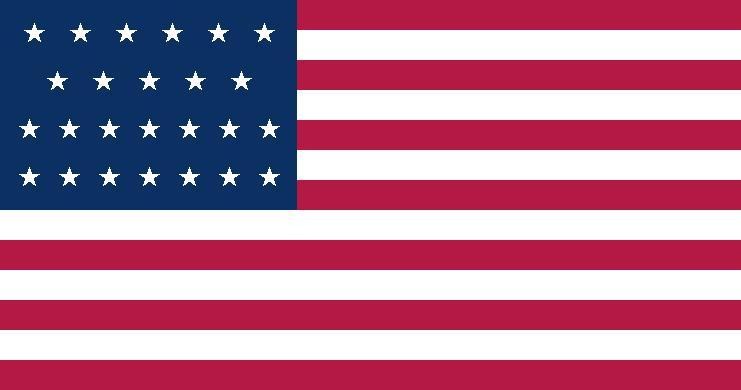
And then, the following year, the flag was enlarged again, as Michigan joined the union.
This flag was adopted in 1837:
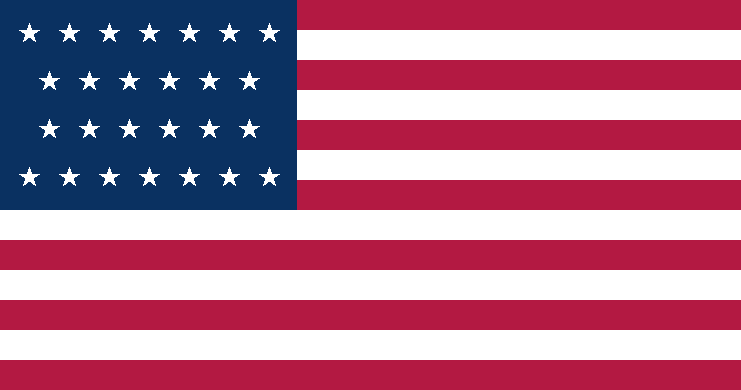
The next state to join was Florida.
This flag was adopted in 1845:
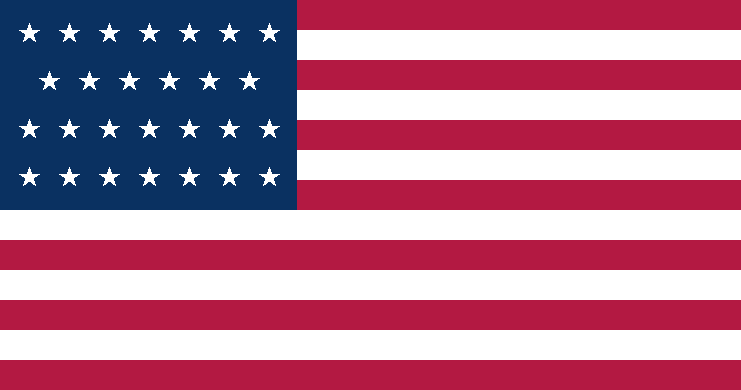
Later that same year, the flag was restored to a more symmetrical layout, when another star was added for Texas.
This flag was adopted in 1845:
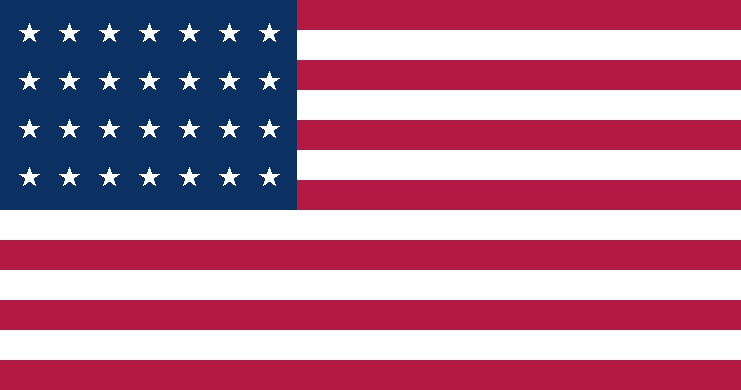
Then another star was added for Iowa.
This flag was adopted in 1847:
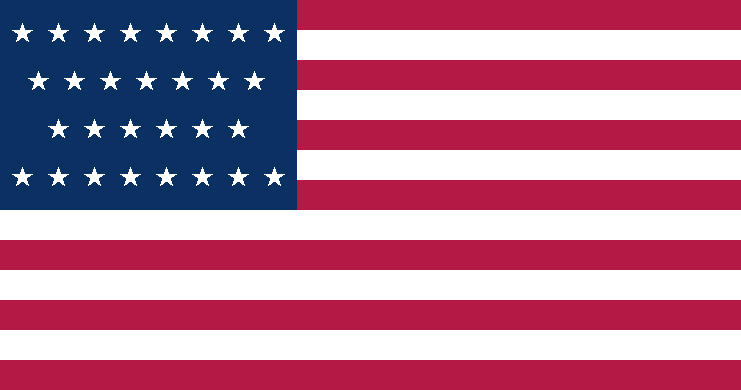
And then another return to symmetry when Wisconsin joined:
This flag was adopted in 1848:
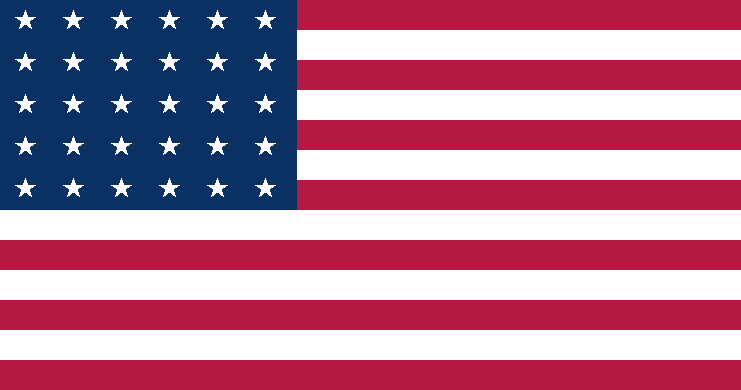
Another star was added for California.
This flag was adopted in 1851:
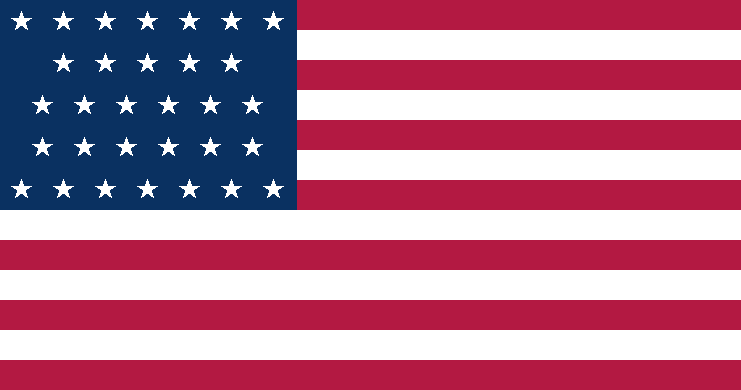
And another for Minnesota.
This flag was adopted in 1858:
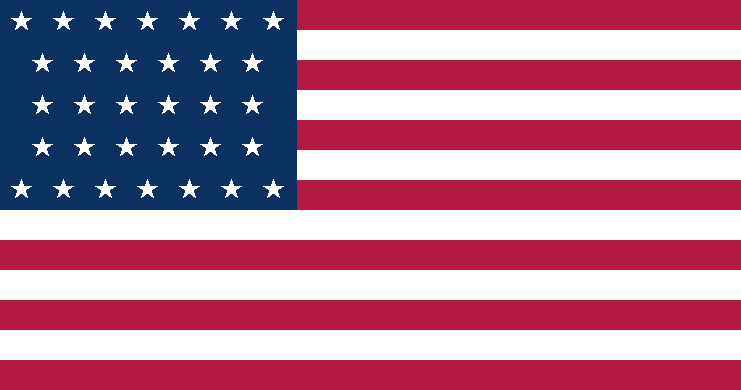
And still another for Oregon.
This flag was adopted in 1859:
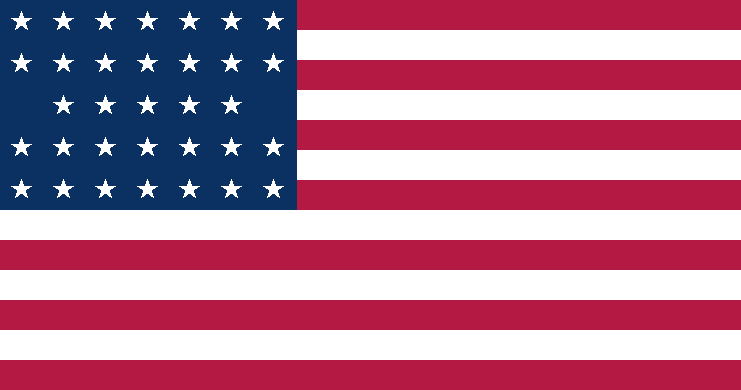
And another for Kansas.
This flag was adopted in 1861:
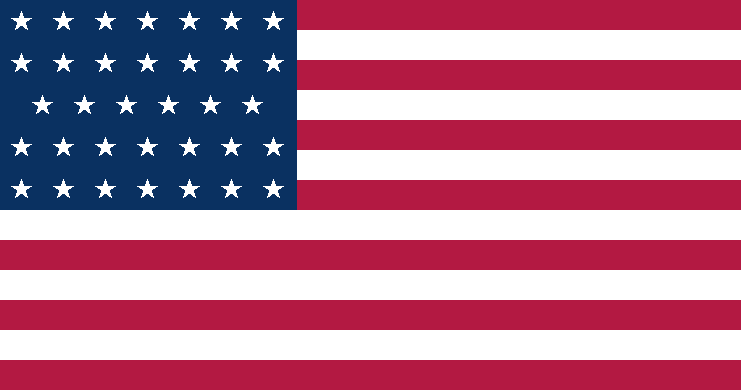
When West Virginia split from the rest of the state of Virginia in order to remain in the United States, another star was added to the flag. (Lincoln is credited with the decision not to recognize the attempt of some states to secede by removing their stars from the flag.)
This flag was adopted in 1863:
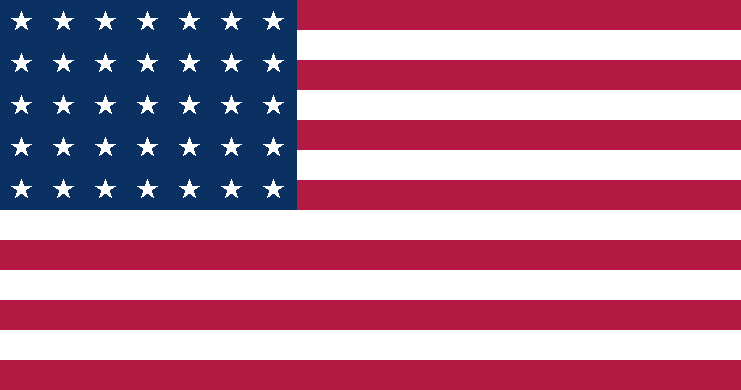
And then, when Nevada joined the Union, another star was added:
This flag was adopted in 1865:

Then a star was added for Nebraska.
This flag was adopted in 1867:

When a star was added for Colorado, for some reason a different arrangement of the stars was chosen, with the short rows having a star removed on the right instead of being staggered.
This flag was adopted in 1877:
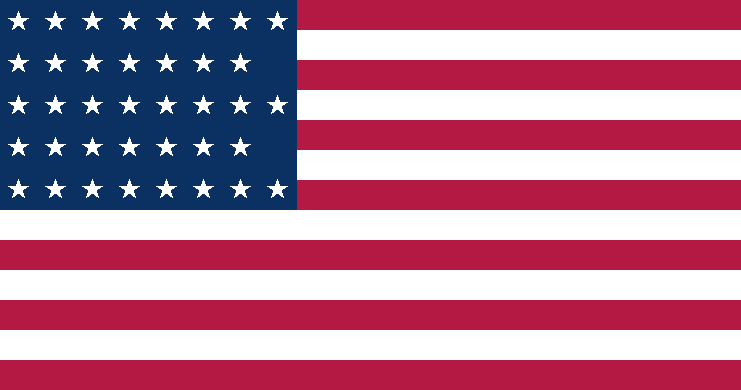
The flag grew by five stars at once to reflect the accession of North Dakota, South Dakota, Montana, Washington, and Idaho. Again, the arrangement of stars took on an unusual shape.
This flag was adopted in 1890:

Things got back to normal when a star was added for Wyoming.
This flag was adopted in 1891:
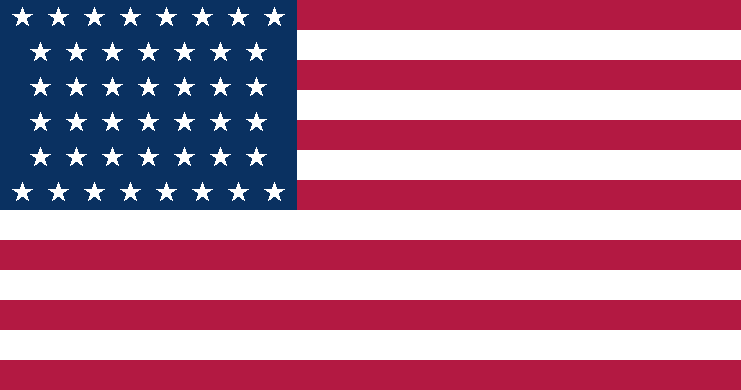
And then another star was added for Utah.
This flag was adopted in 1896:
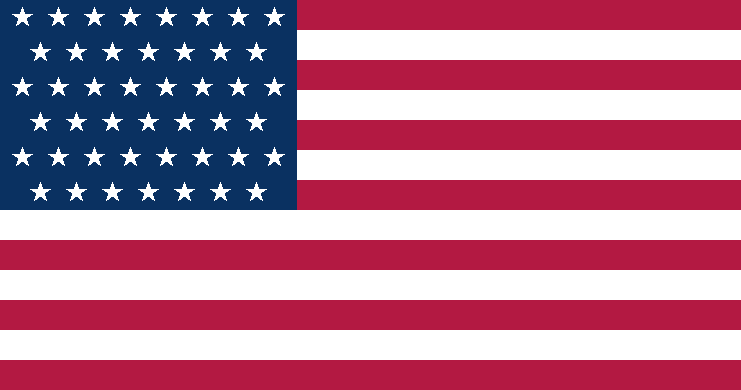
The United States grew to forty-six states when the former Indian Territory became the state of Oklahoma.
This flag was adopted in 1908:
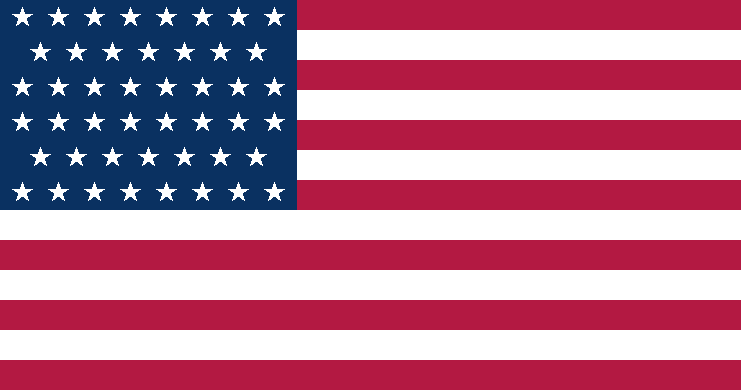
The present form of the continental United States, sometimes known as the "lower 48", was completed when New Mexico and Arizona also joined the Union.
This flag was adopted in 1912:
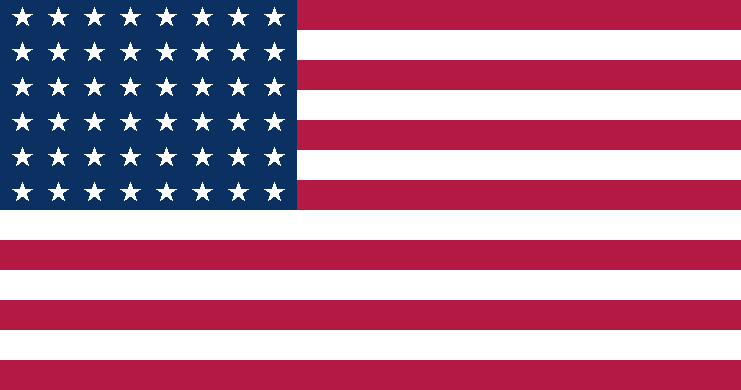
This flag was finally changed after 47 years as a result of Alaskan statehood.
This flag was adopted in 1959:
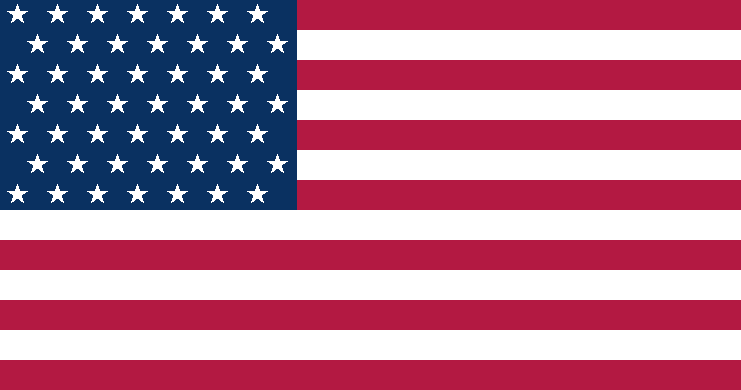
And, finally, once Hawaii achieved statehood, the flag took on its present form, with which we are familiar.
This flag was adopted in 1960:
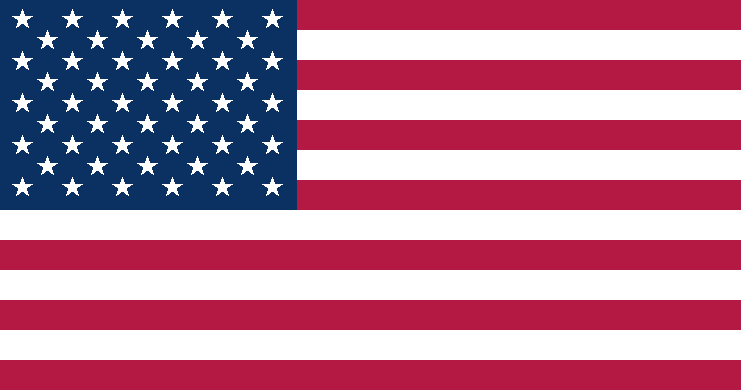
* Actually, of course, as my country is the Dominion of Canada, a Dominion being its form of government, and Canada being the name of the country, and its neighbor to the south being the United States of America, a United States being its form of government, and America being the name of the country, I should have said that the flags of America were being shown here. On this page I discuss the erroneous convention to which I have deferred above.
Copyright (c) 1998, 1999, 2000 John J. G. Savard